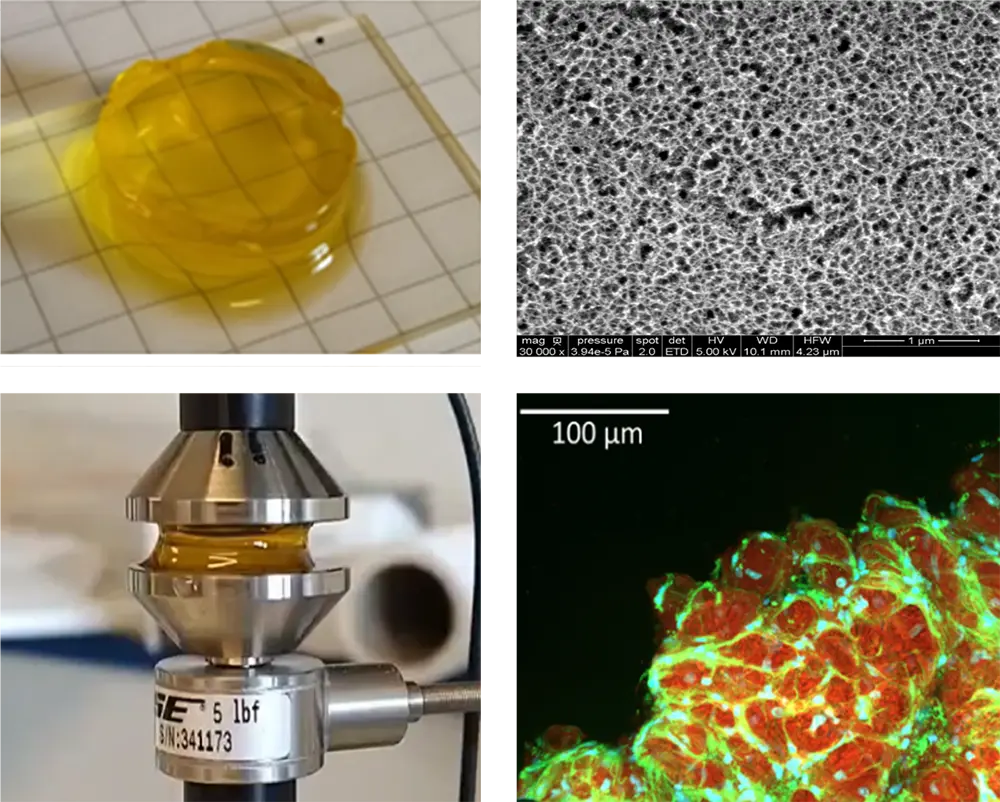Camille carried out her research in the IDeAS team at the Softmat laboratory.
On 10th February, she defended her thesis entitled: “Macro and supramolecular hydrogels responsive to visible light”
In biological environment, cells interact with their surroundings, the properties of which strongly influence their behaviour. Nowadays, studying the relationship between mechanical stress and cell fate is the key to understand many pathologies evolutions such as cancer.
Hydrogels are materials whose properties can be tuned to mimic the cell environment. The objective of this PhD project, funded by the National Research Agency (ANR), was to develop hydrogels with mechanical properties photocontrolable with visible light.
The purpose of this gel was to become a sample carrier to study how different biological tissues respond to the change in the mechanical properties of their surroundings.
Hydrogels based on three water soluble building blocks were designed. They were composed of two intertwined chemical and physical networks. Those hydrogels were characterized by techniques such as scanning electron microscopy, mechanical compression testing and atomic force microscopy.
The results showed that the gels had stimulable photo-chemical properties and that their mechanical properties were tunable, depending on the formulation used, with Young’s moduli between 5 and 25 kPa, compatible with a range of biological tissues.
Besides, experiment with biological samples shed light of their biocompatibility with cardiomyoblasts. These transparent materials especially enabled the imaging of an encapsulated living tissues with confocal microscopy.

- top left: a swollen hydrogel © Camille Courtine / Softmat
- top right: cryo-SEM image of the microstructure of the hydrogels © Bruno Payré / CMEAB
- bottom left: a hydrogel mounted of the compression testing cell © Camille Courtine / Softmat
- bottom right: mouse biopsy encapsulated into a hydrogel and observed through confocal microscopy © Nicolas Pataluch / I2MC
